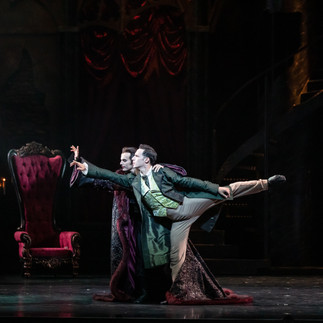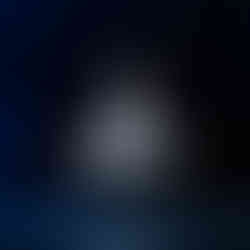Review: Queensland Ballet’s Dracula at the Lyric Theatre, QPAC
- Theatre Travels

- Nov 25, 2021
- 3 min read
Review By Gemma Keliher
While Halloween may be over for the year, Queensland Ballet’s dark performance of Dracula is here to haunt your evening. For those seeking a night of blood-sucking romance, look no further than this adaptation of Bram Stoker’s gothic tale. Premiering in 2018, this co production with West Australian Ballet takes us back to the original, ghastly world of vampires - one where no man, woman, or child is safe from the blood thirsty monsters, and love is so passionate that it’s to die for. That is to say, this ballet is not for the faint hearted. Those that are familiar with the original tale know its gruesome and dark themes. While this ballet is self-described as a gothic romance and focused more on the love stories that are the base of the plot and weaved throughout, there are still adult themes and graphic images, which we leap into straight in the prologue.
Opening on the dark and shadowy world of fifteenth century Transylvania, the combined efforts of Phil R. Daniels and Charles Cusick Smith’s set and costume design, and Jon Buswell’s lighting design work magic to set the time and location throughout the performance. The most powerful scenes were those set in and out of the Count’s castle in Transylvania, with the grand gothic sets looking like they had leapt right off the pages of Bram Stoker’s novel. The way that the candelabras and stage lighting accentuated the set and retained a dark and shadowy feel was impressive. It must have been a challenge to light a ballet that is so full of darkness, both figuratively and literally. The task of how to ensure the dancers are lit enough to be showcased while maintaining the ever-present shadows must have been a feat but was well executed with no action missed and dancers able to slink in and out of the growing darkness. One of the most memorable images on stage was from the opening prologue, with the spotlight creating an eerie floating head image of young Count Dracula, while the scene continued upstage. The costumes added to the authenticity of the story, perfectly suiting the era and genre while retaining those extra touches that pop on stage. Dracula’s luxe cape felt almost like it was another character and demanded precise and powerful control that was impressive to watch.
Each of these elements worked in synchronicity to underpin and support Krzysztof Pastor’s choreography. There was a contemporary feel with movements that lent heavily into the dark, horror themes of the story. From the inmates at the mental asylum to the vampires themselves (whether they be dancing on their coffins or chasing their prey through a cemetery) we saw contorted figures, and sharp, sporadic and often animalistic movements. The grace and power shown through the choreography was entrancing to watch, and the many lifts were performed with ease and control.
The highlights of the evening were of course Principal Artist Victor Estévez as Young Dracula and Senior Soloist Alexander Idaszak as Old Dracula. Aside from when they appear simultaneously in Act II, you would be forgiven for thinking both parts were played by the same person. The characterization of a Count Dracula, so tormented by his long, lost love and eternal years of suffering, was so clear and consistently well portrayed throughout the show by both artists. The commitment and dedication to the character and how this translated through the choreography made these stand out performances. Victor Estévez continues to show such range and is naturally a mesmerizing performer to watch – which seems apt for the supernatural entity of Dracula. Principal Artist Yanela Piñera is a powerhouse dancer and portrayed the roles of Elizabeth and Mina with strong emotion that could be seen and felt from the back of the theatre. Principal Artist Lucy Green showed a transformation from a young girl being courted, to a newly turned vampire, which surely would have been an exciting role to explore range in movement and technique. Special mentions must also go to Camilo Ramos as Jonathan, Joseph Chapman as Arthur, Serena Green as Mrs Westerna, Mali Comlekci as Doctor Seward, Samuel Packer as Professor Van Helsing, and D’Arcy Brazier as Renfield, who were all brilliantly cast. The Phantoms, Liam Geck and Patricio Revé, added beautifully and eerily to the scenes with Dracula, and encapsulated their roles well, alongside the vampires Laura Tosar, Vanessa Morelli, Sophie Zoricic, Dylan Lackey, Vito Bernasconi, and Rian Thompson, who delved deep into the characterisations of the ravenous monsters.
While you may not often hear the words gothic, horror, or dark used to describe a ballet or a love story, it was fascinating to see this genre emerge in this form. Queensland Ballet’s Dracula is a unique and exciting showcase of a gothic love story, though one that will surely not die. Catch a glimpse into the darkness at QPAC from November 24-December 4.
Photo Credit: David Kelly


































